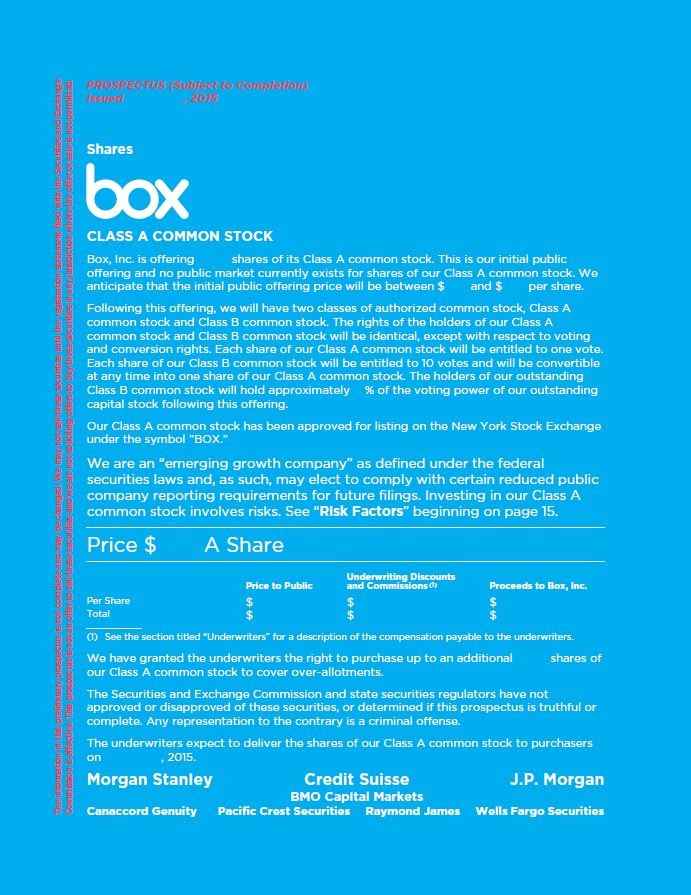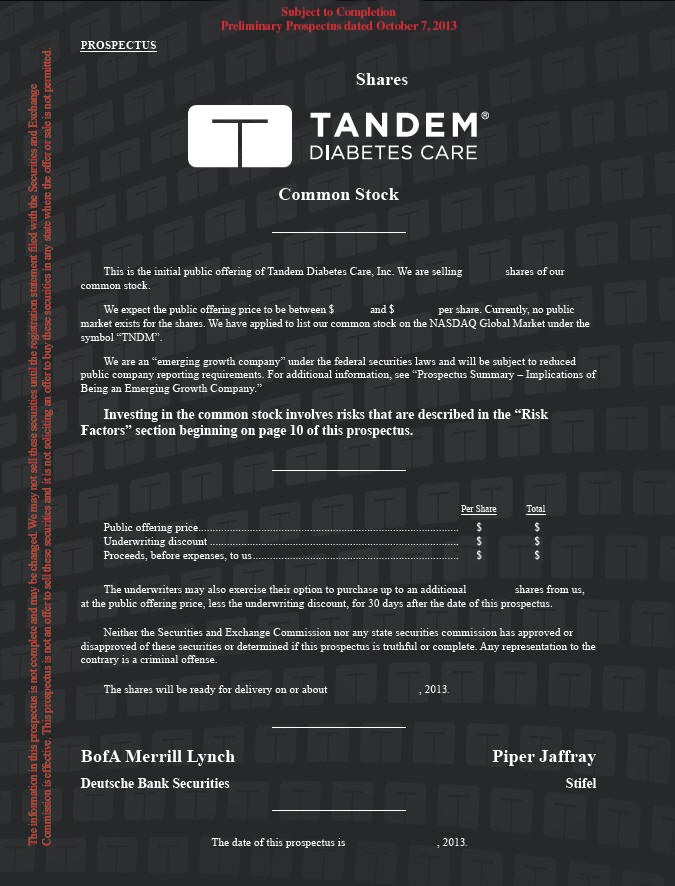IPO Basics The Registration Statement Securities Article
Post on: 2 Июнь, 2015 No Comment

Registration statements have the following two principal parts:
- Part I is the prospectus, the legal offering or selling document. The issuer of the securities must describe in the prospectus the important facts about its business operations, financial condition, and management. Everyone who buys the new issue, as well as anyone who is made an offer to purchase the securities, must have access to the prospectus.
- Part II contains additional information that the company does not have to deliver to investors. Anyone can see this information by browsing on the Securities and Exchange Commission (SEC) Web site
The Basic Registration Form: Form S-1
All companies can use Form S-1 to register their securities offerings. A company should include in the registration statement information on each of the following in readable format:
Business summary. Describes the general character of the business the company transacts or will transact. This includes a brief description of the company, its products and/or services, its technology, and its manufacturing and distribution processes (e.g. how Webvan intends to operate with much lower overhead and reduced head count compared to traditional supermarkets).
Financial summary. Includes an income statement and balance sheet.
Risk factors. Describes the risks and uncertainties of investing in the company. For new companies, this may include a limited business operating history, adverse economic conditions in a particular industry, lack of a market for the securities offered, intense industry competition, goverment regulation, and/or reliance on key personnel or on a limited number of suppliers, distributors, or customers (e.g. why Webvan’s business and operations would be materially adversely affected by an earthquake in the San Francisco Bay Area).
Management and compensation. Identifies the company’s officers and directors. The section also includes information on the company’s compensation and benefits plan, material transactions between the company and its officers and directors, as well as material legal proceedings involving the company or its officers and directors (e.g. number of options granted by Webvan in the last fiscal year prior to its initial offering).
Stock offering. Describes the distribution plan for the securities, including the offering size (e.g. number of shares of Webvan common stock subject to outstanding options and what their weighted average exercise price would be).
Use of proceeds. Lists the intended uses of the proceeds from the stock offering. This may be of a general nature, such as for general corporate purposes (e.g. how Webvan intends to use its IPO proceeds).

Management’s discussion and analysis of financial condition and results of operations. Compares the company’s financial statements on an interim period and annual basis. The analysis covers at least the three most recent fiscal years, unless the company has been in operation for a shorter period of time, and it focuses on material changes or nonrecurring items that may make the comparison of results misleading (e.g. why Webvan’s software development expenses increased from $0.8 million in the first half of 1998 to $6.3 million in the first half of 1999).
Registration statements also must include financial statements audited by an independent certified public accountant. This includes balance sheets from the last two fiscal years and income statements from the last three. All statements must conform with generally accepted accounting principles (GAAP) and SEC accounting requrements. The full schedule of information required in registration statements may be found at 15 U.S.C. § 77aa.
In addition to the information expressly required by the form, a company must also provide any other information that is necessary to make its disclosure complete and not misleading.
Misstatements
If the registration statement, at the time it becomes effective, contains an untrue statement of a material fact or omits to state a material fact necessary to make other statements not misleading, Section 11 of the Securities Exchange Act of 1933 imposes liability on the following persons:
- The persons who signed the registration statement
- The persons who were directors of or partners in the company at the time the untrue or misleading part of the registration statement was filed
- The persons who, with their consent, are named in the registration statement as being or about to become a directors or partners
- The accountants, engineers, or appraisers, or any persons whose profession gives authority to a statement made by them, who have with their consent been named as having prepared or certified any part of the registration statement, or as having prepared or certified any report or valuation that is used in connection with the registration statement, with respect to the statement in such registration statement, report, or valuation, which purports to have been prepared or certified by them
- The underwriters
By imposing this broad scope of liability, the Securities Exchange Act aims to encourage sufficient disclosures so that potential investors can make informed investment decisions.
A company is absolutely liable for any material misrepresentation or omission in the registration statement regardless of how much care it used to prepare it. Directors or underwriters are liable unless they can show that they exercised due diligence, or that after conducting a reasonable investigation, they had a reasonable belief in the accuracy of the statement. Company officers can also raise this defense as well but will usually have a harder time proving they exercised due diligence since they usually work closely with the company. Regardless, even a successful defense to a Section 11 claim is expensive, long, and unpleasant.














